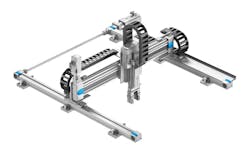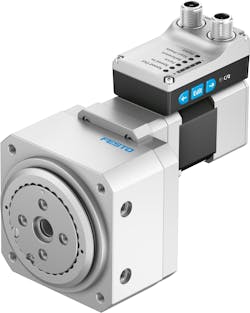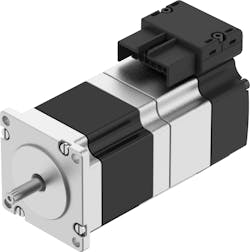Servo or stepper? Why the right choice isn’t obvious any more
Key Highlights
- Technological advancements like closed-loop feedback and microstepping have elevated stepper motors to a "servo-light" status, enabling them to handle precision tasks previously reserved exclusively for servo systems.
- Engineers should replace traditional "rule-of-thumb" selection methods with modern sizing software that objectively ranks servo and stepper options side-by-side based on specific load, stroke and cycle data.
- While steppers are often the cost-effective choice for fixed loads and moderate speeds (0–1,500 rpm), the final decision must weigh "second-level" requirements where servos excel, such as variable loads, advanced functional safety and predictive analytics.
For decades, common wisdom said servo motors offer high precision and speed, while stepper motors provide simple, low-cost motion. That divide has narrowed. Closed-loop stepper systems, micro-control of steps, integrated drives and faster servo commissioning now overlap motor capabilities. The practical result is that engineers should compare stepper and servo options objectively with sizing software and then weigh safety, sustainability, commissioning speed and maintenance realities before deciding on which motor to apply.
Stepper motor: What is it? What has changed?
A stepper motor moves in discrete increments, typically 1.8° per step. With microstepping, each step is divided into smaller increments to a maximum of 1,024 microsteps per step, with 256 microsteps being a commonly applied resolution. Microstepping produces smoother motion, quieter operation and finer resolution. This enhancement corrects the long-standing roughness once associated with open-loop systems.
Adding an encoder enables position verification and automatic correction for missed steps. This fact turns a simple, low-cost motor into a controlled, reliable axis suitable for a broader range of industrial tasks. Closed-loop feedback has transformed the stepper into what some in the industry call “servo-light.”
Steppers operate efficiently on 24 – 48 Vdc systems and excel when operating at 0 – 1,500 rpm (Figure 1). Torque is strongest at low speeds and declines as speed increases. These characteristics are well suited to moderate-speed, fixed-load tasks such as indexing tables, pick-and-place units, format adjustments or light dispensing lines. Today’s drives reduce heat by modulating current, and integrated stepper-drive assemblies simplify wiring and conserve control-panel space.
Stepper sweet spots
Steppers are ideal for applications where loads are constant and repeatable, cycle times are moderate and cost or simplicity take priority (Figure 2). They thrive on low-voltage supply systems and excel at point-to-point or format-change motions. In many moderate-duty designs, a closed-loop stepper delivers servo-level performance with less complexity and at a lower cost.
Servo motor: What is it? What has changed?
A servo system combines a motor, feedback device, often an encoder, and servo drive operating in a closed loop. Servos deliver the highest torque density per frame size, maintain control over variable or changing loads and achieve 3,000 – 6,000 rpm continuous speeds, with higher limits possible at elevated bus voltages. Energy efficiencies of 80 to 90% are typical.
Advancements in commissioning have reduced setup time and improved diagnostic precision. Modern servo drives include auto-tuning, integrated safety and communication protocols that allow faster commissioning and predictive feedback. Integrated drive/motor options reduce panel space while offering full servo performance.
Servos remain the first choice for high-speed, high-precision motion such as packaging, CNC or robotics. Their ability to deliver variable torque and respond dynamically to load changes distinguishes them from open-loop systems. The technology’s maturing ease of use has also expanded its appeal for general industrial automation.
Servo sweet spots
Servos excel where loads change, speed and acceleration vary or safety and diagnostics are required (Figure 3). They dominate in dynamic applications, multi-axis synchronization and systems that demand sustained torque accuracy. When uptime, energy efficiency and advanced safety are measurable business drivers, the servo delivers the strongest lifecycle value.
Sizing software is an objective source of selection information
Modern sizing software transforms selection from a subjective judgment to a data-driven process (Figure 4). By entering motion parameters—load, distance, stroke, cycle time and in some cases environmental factors—engineers can instantly compare multiple solutions that meet the requirements.
Software can generate servo and stepper options side by side, often ranking them by performance and cost. Many top results are stepper systems that meet all criteria at a lower investment. The process removes bias and accelerates early design decisions.
Equally valuable is that some software also provides documentation. These packages generate reports that summarize the assumptions, mechanics and drive combinations that went into the calculations. This information contributes to consistent communication among the engineering, production and procurement teams. This information/record helps reduce design rework and can help original equipment manufacturer (OEM) teams justify their selections with objective data.
Add-on considerations that influence the choice
Even after sizing software identifies suitable candidates, engineers must account for broader system factors that define real-world performance and long-term success.
Once the basic motion requirements are satisfied, engineers face a second level of decision-making. These second-level considerations include safety, sustainability, predictive analytics, commissioning and environment. They often help determine long-term performance, total cost and compliance. They transform a technically correct selection into a system that is safe, maintainable and future-ready.
Safety
Safety is the first of these second-level factors because it addresses operator protection and, where needed, regulatory compliance. Motion safety functions exist on two layers—basic safety and functional safety.
Basic safety includes Safe Torque Off (STO) and Safe Stop 1 (SS1), which cuts energy to the motor when a guard, door or light curtain is triggered. Both servos and steppers provide this. Functional safety—Safe Stop 2 (SS2), Safe Speed (SLS), and Safe Operating Stop (SOS)—adds controlled deceleration, limited-speed zones and fault monitoring. These advanced functions are usually servo-only features required for SIL 2 to 3 compliance.
Get your subscription to Control Design’s daily newsletter.
Sustainability and total cost of ownership
Steppers win on initial cost and wiring simplicity. Fewer connectors, smaller drives and lower voltages reduce installation expenses. Servos, though higher in unit cost, offset that with better energy efficiency, integrated intelligence and diagnostic data that improve uptime. These factors help define the total cost of ownership over a machine’s life.
Predictive analytics, AI and digitalization
Servo electronics now support condition-monitoring algorithms that analyze current, position error and vibration trends to detect early signs of wear. Increasingly, these algorithms incorporate artificial intelligence and machine learning to recognize complex patterns and predict component failure before it occurs. This proactive insight allows maintenance teams to schedule service, order parts and prevent unplanned downtime. These capabilities, sometimes integrated through IIoT gateways, make predictive analytics a positive differentiator for OEMs. While still emerging in stepper systems, this functionality is becoming more common as microcontroller performance increases.
Commissioning speed
Fast commissioning shortens the time to production. Servos today feature automatic parameter detection and intuitive interfaces that cut setup time from hours to minutes. Steppers remain simpler when the motion profile is repetitive and requires minimal tuning. In both cases, faster commissioning contributes directly to shorter machine-build schedules and faster ROI.
For example, a mechanical engineer can size a system in electric motion sizing and generate a commissioning file. This bridges the gap between mechanical and controls engineering and eliminates potential misunderstandings because of miscommunication.
Environment and practical fit
Real-world conditions must guide the final selection. Ensuring electrical compatibility and environmental protection prevents premature failures and simplifies maintenance. Temperature extremes, airborne particulates and washdown cleaning affect motor protection and its IP rating. Steppers align naturally with low-voltage, compact systems; servos with higher-voltage, high-duty systems.
The human element
Maintenance and operations teams provide firsthand insight into duty cycles, downtime causes and cleaning routines. Their knowledge can ground the design in actual rather than theoretical conditions. Early collaboration with maintenance and operations personnel ensures the selected motor fits both environmental and operational constraints, reducing oversizing, improving reliability and aligning system expectations with plant experience. Maintenance and operations teams also know which brand of motors seem to run forever and which are problem children. They know how long it takes to receive a replacement and which companies support their products without finger-pointing.
A logical workflow for engineers
- Define mechanics and duty cycle. Quantify loads, distances, cycle times and life expectancy. Capture environmental and voltage constraints.
- Run sizing software. Generate servo and stepper candidates that meet the parameters. Compare efficiency, performance and cost.
- Apply safety requirements. If functional safety or SIL certification is needed, restrict the shortlist to compliant servo systems.
- Evaluate energy consumption, ease of startup and diagnostic features against purchase price.
- Confirm that real operating conditions match design assumptions before final specification. Also confirm quality, reliability, support and replacement speed.
Conclusion
The choice between servo and stepper motors is no longer defined by tradition. Modern stepper systems deliver smooth, precise motion once reserved for servos, while servo technology continues to advance in safety, diagnostics and ease of commissioning.
Engineers now have objective tools to compare both, evaluate total lifecycle cost and select the most practical solution. The best choice depends not on brand or legacy but on logic, data and the knowledge of the people who run and maintain the equipment.
When applied with discipline and clear analysis, technology can achieve reliable, efficient motion at the right cost.
About the Author

Sandro Quintero
Festo North America
Sandro Quintero is head of mechatronics technology at Festo North America with expertise across engineering, sales and management. He holds a degree in mechatronics engineering, an MBA and advanced certifications from Harvard and Cornell.

Bryan Elam
Festo North America
Bryan Elam is a mechatronics applications engineer at Festo North America with expertise on sizing motion control systems, engineering and sales. He has selected motors for use in every application you can imagine, from submerged in the ocean to outer space.





